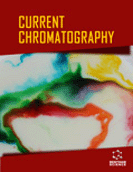Abstract
Ion chromatography was first introduced in 1975. Since then, it has been applied in most areas of the analytical chemistry. It is an effective technique used to analyze various inorganic and organic ions present in samples with different matrices. Importantly, ion chromatography has almost completely replaced the classical methods of ion determination. Its main advantages include: short analysis time; analysis of small volume samples; high sensitivity and selectivity; simultaneous separation and determination of different ions or ions of the same element at different oxidation states. As a result, it is routinely used to investigate ionic compounds in water, air and soil samples. The most important objectives of the ion chromatography improvement are to develop new stationary phases and enhance the peak capacity with complex eluent profiles. It is also essential to devise new methods of sample preparation and implementation of the hyphenated methods. In order to establish lower permissible limits for more and more ionic contaminants, researchers will need methods that are more accurate. For that reason, ion chromatography will continue to develop and become an even more valuable tool in the future. The following paper briefly describes the history, principles, development and applications of ion chromatography.
Keywords: Anions, bromate, capillary electrophoresis, cations, columns, detectors, eluents, history and development, ion chromatography standards, ion chromatography, metalloids, metals, sample matrix, sample preparation, species analysis, wastewater, water.
 81
81

















